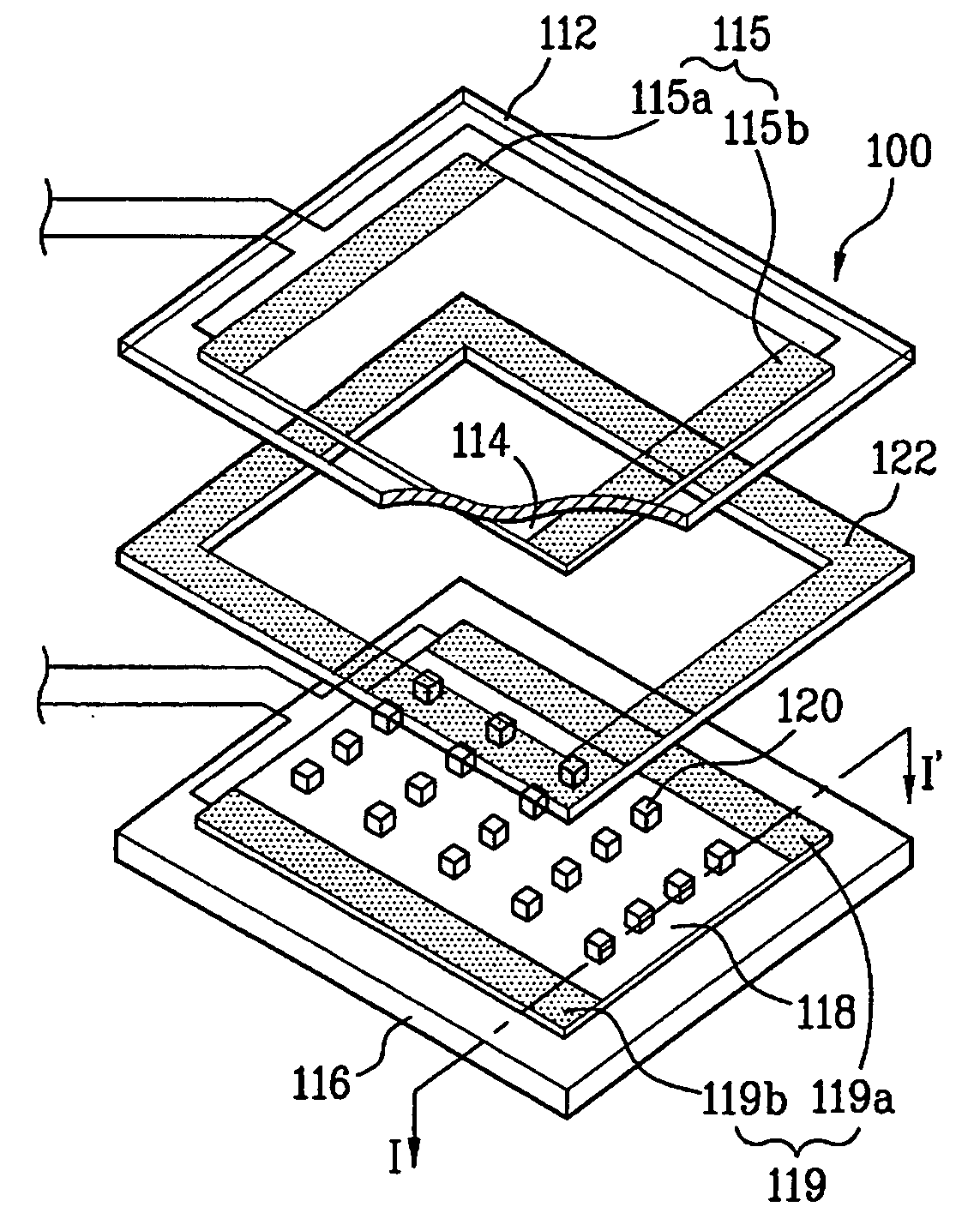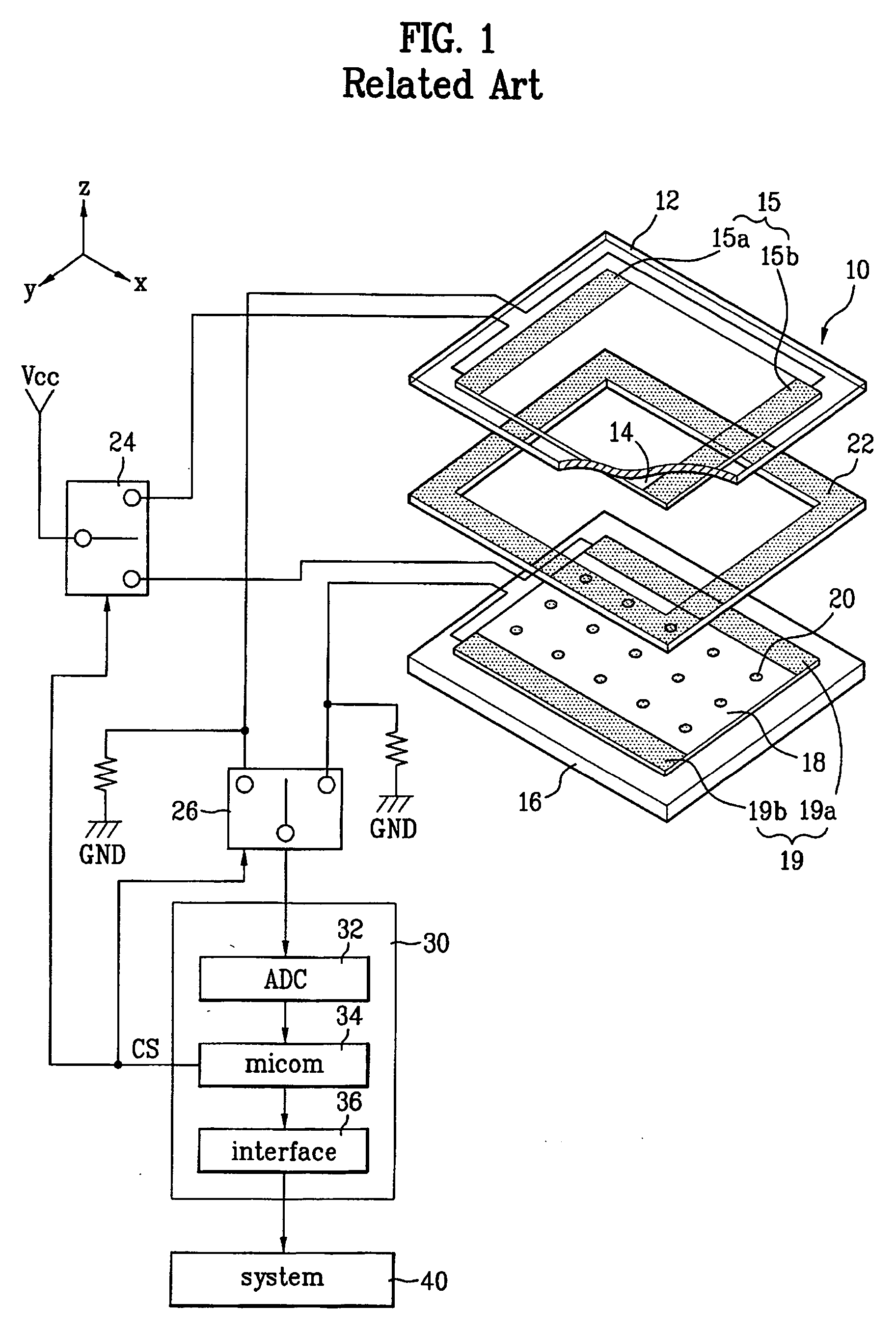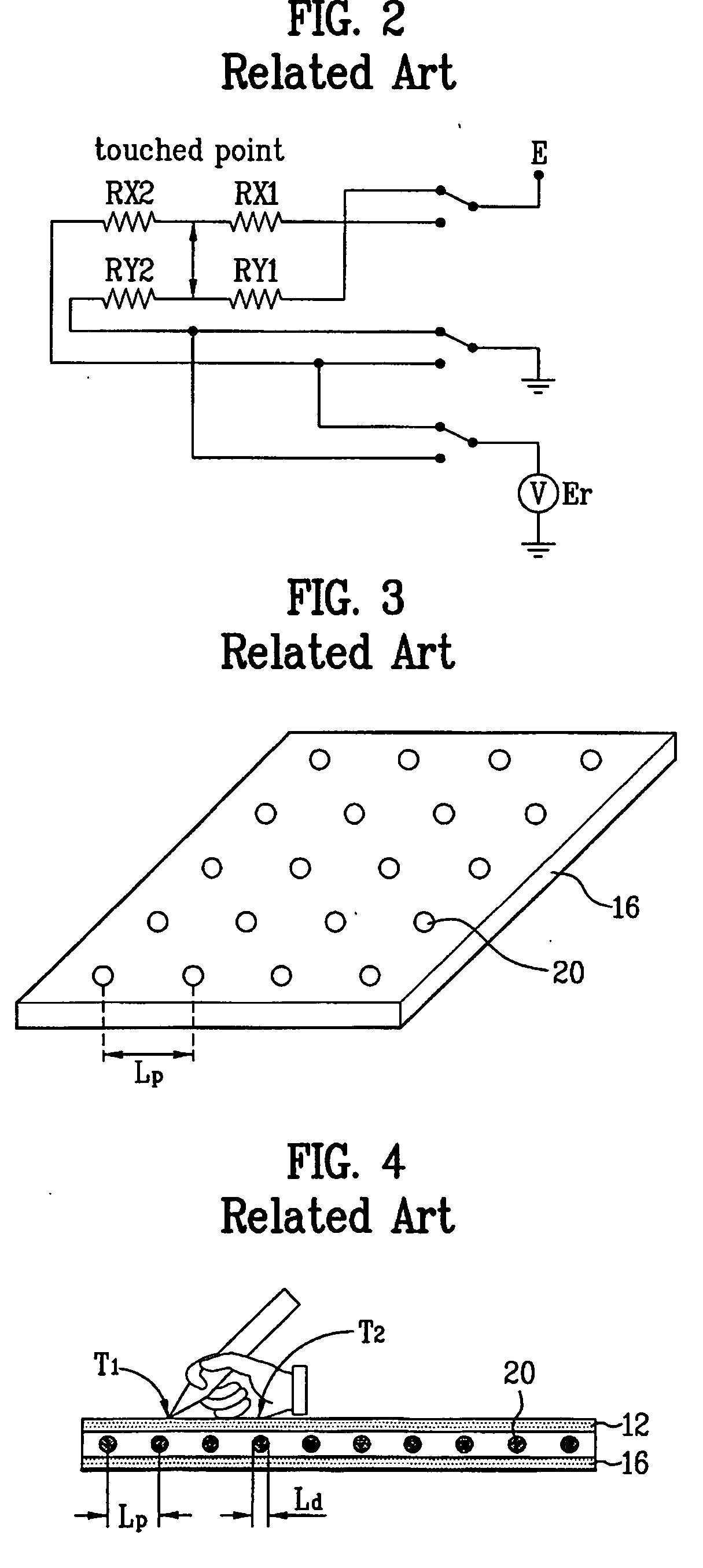Resistive type touch panel
a type and touch panel technology, applied in the field of resistive type touch panel, can solve problems such as errors in detecting pen touch points, and achieve the effect of reducing the magnitude of minimizing the generation of erroneous coordinate information, and reducing the deformation of the substra
- Summary
- Abstract
- Description
- Claims
- Application Information
AI Technical Summary
Benefits of technology
Problems solved by technology
Method used
Image
Examples
first embodiment
[0059]FIG. 7 is a cross sectional view along I-I′ of a portion of the resistive type touch panel illustrated in FIG. 6 depicting a first embodiment. In FIG. 7, spacers 120 are disposed on an upper substrate 112 or a lower substrate 116. The spacers 120 may be formed by printing or photo process. The spacers 120 may be disposed on an area of the touch panel with a predetermined center-to-center distance (Lp) between the spacers 120 such as between about 0.5 mm and 0.6 mm. As used herein, the term “about” should be construed to be plus and minus 10% of the measure value, or plus and minus 5% of the measured value unless otherwise indicated.
[0060] Each spacer 120 has a predetermined length (Ld) and a predetermined width. The width and the length may be substantially equal, such as between about 40 μm and 50 μm. In addition, each of the spacers 120 may have a predetermined height, such as between about 5 μm and 13 μm. Accordingly, the area of the first and second surface of each of the...
second embodiment
[0068]FIG. 9 is a cross sectional view along I-I′ of a portion of the resistive type touch panel 100 illustrated in FIG. 6. In FIG. 9, spacers 120 are formed on an area of the lower substrate 116. In addition, the lower substrate 116 includes a plurality of edge spacers 125 disposed adjacent to an X-electrode bar 115 or a Y-electrode bar 119, and adjacent to a periphery of the conductive layers 116 and 118.
[0069] The edge spacers 125 are formed to have a hemispherical surface. The hemispherical surface is formed to be in contact with one of the transparent conductive layers 116 and 118 when an activation force is applied. Absent an activation force, the hemispherical surface is positioned proximate one of the transparent conductive layers 116 and 118 with a space there between. With the exception of the edge spacers 125, the resistive type touch panel according to the second embodiment has a similar structure to the resistive type touch panel discussed with reference to FIGS. 6-8. ...
third embodiment
[0071]FIG. 10 is a plan view of a portion of a resistive type touch panel 100 showing a disposition of spacers according to the third embodiment. In the resistive type touch panel 100 shown in FIG. 10, a plurality of spacers 130 may be formed in polygonal column shape, such as a hexahedral shape. Accordingly, the spacers 130 may each have a substantially similar length (Ld) and width that is between about 40 μm and 50 μm, and a height of between about 5 μm and 13 μm.
[0072] The spacers 130 may be disposed on one of the first substrate and the second substrate as previously discussed. In addition, the spacers 130 may be distributed in a predetermined pattern so that the spacers 130 are staggered with respect to each other. Accordingly, portions of the predetermined pattern may be configured to resemble a diamond shape (a-b-c-d) as illustrated.
[0073] In FIG. 10, the spacers 130 can be grouped into groups of spacers forming a plurality of horizontal lines along a first axis. In a firs...
PUM
 Login to View More
Login to View More Abstract
Description
Claims
Application Information
 Login to View More
Login to View More - R&D
- Intellectual Property
- Life Sciences
- Materials
- Tech Scout
- Unparalleled Data Quality
- Higher Quality Content
- 60% Fewer Hallucinations
Browse by: Latest US Patents, China's latest patents, Technical Efficacy Thesaurus, Application Domain, Technology Topic, Popular Technical Reports.
© 2025 PatSnap. All rights reserved.Legal|Privacy policy|Modern Slavery Act Transparency Statement|Sitemap|About US| Contact US: help@patsnap.com



